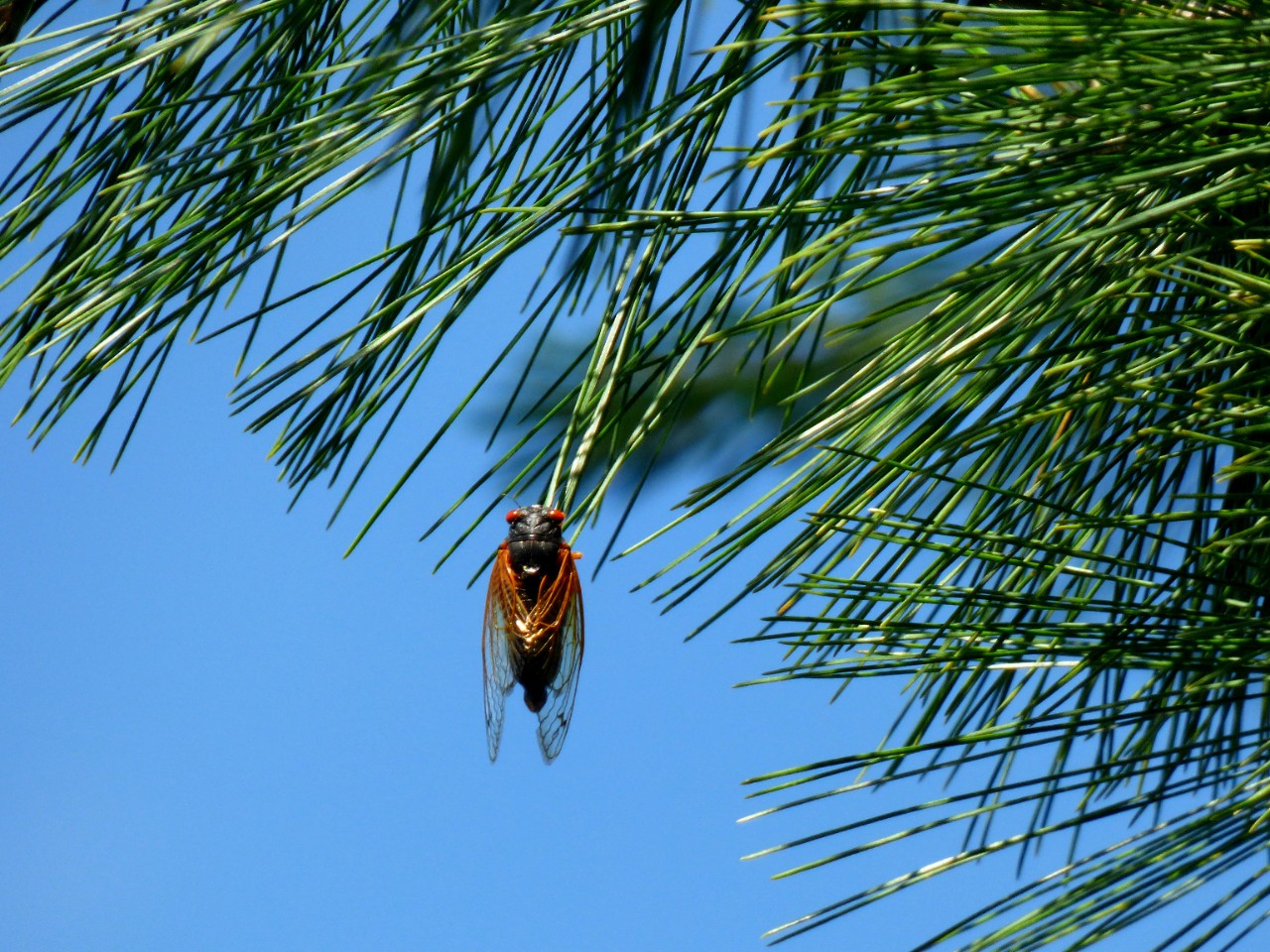
WLW: UC biologist says get ready for return of cicadas
Nathan Morehouse tells 'Eddie & Rocky' this year's emergence heralds a bigger one next year
Ready or not, the cicadas are coming.
University of Cincinnati biologist Nathan Morehouse spoke to WLW's "Eddie & Rocky Show" about what to expect with this year's emergence of 17-year cicadas.
The red-eyed insects spend most of their lifetimes underground as larvae where they feed on sap from roots, Morehouse said.

UC biologist Nathan Morehouse. Photo/Jay Yocis/UC Creative + Brand
The last time Cincinnati saw cicadas, the Boston Red Sox won its first World Series in nearly 100 years, Kanye West was Billboard's new artist of the year and a social network called The Facebook launched.
"We don't know how they count the number of years down below. Some biological clock monitors the changing of seasons," Morehouse told WLW. "But a season with two hot spells could throw them off. That might be why some are showing up early.
"Or maybe they're just bad at math."
Morehouse is an associate professor of biological sciences in UC's College of Arts and Sciences. He is in the middle of a international project sponsored by the National Science Foundation to study the evolution of color vision in jumping spiders.
Periodical cicadas are found from Texas to Massachusetts in more than a dozen regional broods, according to the U.S. Department of Agriculture. Cincinnati's cicadas are part of Brood X.
North Carolina, Virginia and West Virginia also will see cicadas emerge this year, according to the USDA.
Morehouse said this year's emergence in parts of Ohio and the Midwest likely will be a fraction of what we can expect in the summer of 2021. But some neighborhoods could see thousands of the noisy insects in the next month or two.
"We're not expecting to see them in big numbers until next year. But they're already coming out a year early," Morehouse said.
"This is a fun little surprise, depending on whom you are."
Morehouse said the males are responsible for the deafening cacophony associated with the massive swarms as they try to attract females, which lay eggs in the tree canopy. When the eggs hatch, the baby cicadas burrow into the ground to lurk another 17 years.
Featured image at top: UC biologist Nathan Morehouse says we could see 17-year cicadas starting this summer. Photo/Laura Gilchrist/Unsplash

Periodical cicadas are found from Massachusetts to Texas. Cincinnati will begin to see them emerge this summer and again next summer. Graphic/U.S. Forest Service
Related Stories
Make way for Wawa
June 6, 2025
Wawa opened its doors to Liberty Township this spring to long lines and fanfare. The gas station and c-store’s expansion into greater Cincinnati comes just months after rival Sheetz opened its first southern Ohio location in Franklin. The Cincinnati Business Courier sought out University of Cincinnati professor Michael Jones’ insights on what it means for hometown giant, UDF.
Ohio medical regulators raise concerns over retail IV therapy...
June 6, 2025
On May 15, the State Medical Board of Ohio, Ohio Board of Pharmacy and Ohio Board of Nursing issued a joint regulatory statement addressing patient safety concerns when it comes to retail IV therapy clinics. The clinics administer a combination of saline, vitamins, electrolytes and amino acids, as well as headache relief and anti-nausea medications through an intravenous drip. Clinics in the Cincinnati area have made claims that their treatments can treat dehydration better than water alone, while also boosting immunity, improving gut health and maintaining healthy joints. On Cincinnati Edition recently, experts talked about the risks associated with retail IV hydration and if these services offer effective solutions to the health concerns they target.
Wondering what jobs you can get with a sociology degree? Let’s...
Explore top sociology jobs, career paths, salaries and tips for sociology majors. Discover what you can do with a sociology degree — from entry-level roles to high-paying careers.
